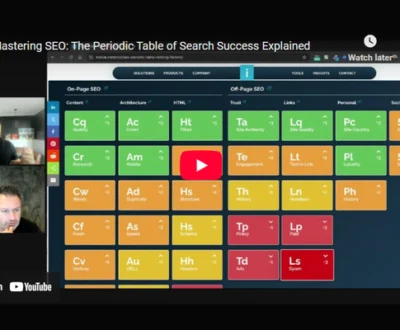When doing keyword research for multilingual SEO, I focus on identifying core seed keywords in the source language and then expand them carefully for target languages, considering local search habits and cultural nuances. I avoid direct translations by using tools and collaborating with native speakers to validate terms. It’s essential to analyze search volume, competition, and user intent while adapting keywords to regional slang and customs. Consistent monitoring and updating keep SEO strategies effective. Following these steps reveals deeper insights into global optimization.
- Key Takeaways
- Understanding the Importance of Multilingual Keyword Research
- Identifying and Analyzing Seed Keywords in the Source Language
- Generating and Validating Keywords for Target Languages
- Incorporating Cultural Nuances and Localization Strategies
- Utilizing Tools and Collaborating With Local Experts
- Mapping Keywords and Optimizing On-Page Elements
- Monitoring Performance and Updating Keywords Regularly
- Frequently Asked Questions
- How Do I Handle Multilingual Keyword Research for Voice Search Optimization?
- What Are Common Pitfalls to Avoid in Multilingual Keyword Research?
- How Can I Prioritize Keywords for Markets With Limited Search Data?
- What Role Do Social Media Trends Play in Multilingual Keyword Research?
- How Do I Integrate Multilingual Keyword Research With Paid Advertising Campaigns?
- Final Thoughts
Key Takeaways
- Start with seed keywords in the source language, then generate localized variations considering synonyms and related phrases for each target language.
- Use keyword research tools like SEMrush and Google Keyword Planner to gather search volume and competition data for multilingual keywords.
- Collaborate with native speakers or local experts to validate keywords and ensure cultural relevance and proper search intent alignment.
- Adapt keywords beyond direct translation by incorporating local slang, dialects, cultural nuances, and regional search behaviors.
- Regularly monitor keyword performance, user engagement metrics, and conversion rates to optimize and update multilingual SEO strategies.
Understanding the Importance of Multilingual Keyword Research
Although many businesses focus on English keywords, multilingual keyword research is essential for expanding your online reach and connecting with a broader audience.
When you consider a multilingual audience, you’re not just translating words—you’re addressing different search intent shaped by culture and language. Over 75% of internet users don’t primarily speak English, so targeting only English keywords limits your potential market. Effective multilingual SEO requires content localization to capture user intent rather than just direct translation.
By researching keywords in various languages, you tap into untapped markets and improve your visibility on localized search engines. Understanding the search intent behind queries in each language helps you create content that truly matches what users want, increasing engagement and conversions.
Multilingual keyword research also allows you to optimize for local algorithms, which can differ greatly from Google’s main search engine.
In short, this approach breaks language barriers, making your site more accessible and relevant to diverse users worldwide, ultimately boosting your online presence and effectiveness.
Identifying and Analyzing Seed Keywords in the Source Language
When you begin multilingual SEO, identifying and analyzing seed keywords in your source language is an essential first step. I start with seed brainstorming, focusing on concise, primary terms that clearly describe my business or product.
These seed keywords, usually one or two words like “organic green coffee,” serve as the foundation for further research. To expand this list, I include keyword variations such as synonyms and related phrases, which I find by exploring Google’s autocomplete, “People Also Ask” sections, and SEO tools like Google Keyword Planner or SEMrush. Understanding market nuances helps tailor these variations to local preferences and search habits.
Analyzing these seed keywords involves checking their search volume, competition, and relevance to my business goals. I also review current rankings and competitor keywords to understand where I stand.
This careful identification and analysis guarantee that the core terms I choose are both relevant and effective, setting a strong base for multilingual keyword work while focusing on potential return on investment.
Generating and Validating Keywords for Target Languages
Since multilingual SEO requires more than direct translation, generating and validating keywords for target languages involves careful adaptation and research.
I start by translating core seed keywords but quickly move to keyword expansion, using tools like SEMrush or Google Keyword Planner to gather a broader list. This process helps me capture local dialects and slang that direct translations often miss.
I also analyze competitors’ keywords in the target market to understand what truly resonates with local users. After compiling potential keywords, I validate them by checking search volume, competition, and relevance to the business.
It’s crucial to involve native speakers or local experts to ascertain keywords match actual search intent and avoid cultural mismatches. Finally, I refine the list by prioritizing long-tail keywords that reflect specific user queries, balancing volume and competition.
This thorough approach guarantees that my multilingual SEO efforts connect with real audiences in each target language.
Incorporating Cultural Nuances and Localization Strategies
To achieve effective multilingual SEO, I recognize that incorporating cultural nuances and localization strategies goes far beyond simple translation.
It requires cultural sensitivity and a deep understanding of regional dialects to connect meaningfully with local audiences. Simply translating keywords can miss the mark if the cultural context and search behavior aren’t considered.
For example, I focus on:
- Adapting keywords to reflect local slang, idioms, and search habits rather than relying on direct equivalents.
- Considering cultural references, holidays, and social customs that influence how people search for information.
- Avoiding stereotypes and recognizing diversity within each market to prevent missteps and guarantee relevance.
Utilizing Tools and Collaborating With Local Experts
Although automated tools provide valuable data for multilingual keyword research, I find that combining these resources with insights from local experts greatly enhances accuracy and relevance.
Keyword research tools offer crucial metrics like search volume and competition, but they often miss subtle language variations and cultural nuances. That’s where local expert collaboration becomes essential.
Working with native speakers or regional SEO specialists helps capture authentic expressions and trending terms that tools might overlook. When I collaborate with local experts, I gain a more precise understanding of how people in different regions search online, which improves targeting.
Best practices include using keyword research tools to gather initial data, then validating and expanding those findings through local expert input. This combined approach guarantees the keywords are both globally informed and locally relevant, making the SEO strategy more effective across languages.
Ultimately, local expert collaboration complements technology and leads to richer, more actionable keyword insights.
Mapping Keywords and Optimizing On-Page Elements
When managing multilingual SEO, mapping keywords effectively is crucial for aligning your content with user intent across different languages.
Keyword alignment means associating researched keywords with specific pages, guaranteeing each language version targets relevant search terms. I start by mapping one or two primary source-language keywords to core pages, then localize them carefully, considering cultural relevance—not just direct translation.
Following SEO best practices, I optimize on-page elements like title tags, meta descriptions, headers, and URLs with these localized keywords. Here’s how I approach it:
- Translate and localize title tags and meta descriptions, keeping them concise and user-focused for each language.
- Use one H1 header per page, incorporating the main localized keyword, while translating all content and alt text accurately.
- Implement language-specific URLs with localized keywords, maintaining a consistent structure to help search engines and users navigate smoothly.
This method guarantees your multilingual site speaks directly to each audience, improving visibility and relevance.
Monitoring Performance and Updating Keywords Regularly
Mapping and optimizing keywords sets a strong foundation, but maintaining success in multilingual SEO demands ongoing attention to how your keywords perform across different languages and regions. I regularly track performance metrics such as organic traffic, keyword rankings, and user engagement to understand what’s working. Tools like Google Analytics and Search Console help me segment data by language and region, making it easier to spot trends or issues. I also compare key metrics across language versions, focusing on bounce rates and time on site to fine-tune content.
Here’s a simple overview of what I monitor:
| Performance Metric | Purpose |
|---|---|
| Organic Traffic | Measures visitor volume |
| Keyword Rankings | Tracks search position |
| Conversion Rates | Assesses goal completions |
| Bounce Rates | Indicates user engagement level |
| Time on Site | Shows content relevance |
Regularly updating keywords based on these insights keeps the SEO strategy effective and aligned with changing search behaviors.
Frequently Asked Questions
How Do I Handle Multilingual Keyword Research for Voice Search Optimization?
When I handle multilingual keyword research for voice search, I focus on regional dialects and natural speech patterns, using question-based keywords to capture how people speak differently, ensuring content sounds conversational and fits local search behavior.
What Are Common Pitfalls to Avoid in Multilingual Keyword Research?
Did you know 60% of multilingual keyword research fails due to keyword translation issues? I’ve learned ignoring cultural nuances leads to mistranslations and irrelevant terms, so I always prioritize local context to avoid these common pitfalls.
How Can I Prioritize Keywords for Markets With Limited Search Data?
When facing limited data, I focus on keyword prioritization by targeting highly relevant, low-volume terms. I rely on local insights and search intent to guarantee keywords truly connect with my audience, maximizing conversion potential despite scarce metrics.
What Role Do Social Media Trends Play in Multilingual Keyword Research?
Like discovering a telegram in the digital age, I use social media algorithms to spot trends, ensuring my keywords align with cultural relevance. This approach helps me capture authentic language and boost engagement across diverse markets.
How Do I Integrate Multilingual Keyword Research With Paid Advertising Campaigns?
I integrate multilingual keyword research by focusing on cross language targeting and ad localization, tailoring keywords and ads to each language and culture, ensuring relevance, and aligning them with localized landing pages for effective paid advertising campaigns.
Final Thoughts
In multilingual SEO, thorough keyword research is the backbone of success. By carefully selecting and validating terms across languages, while respecting cultural differences, you build a strong foundation. Using the right tools and local expertise guarantees you don’t put the cart before the horse. Regularly monitoring and updating your keywords keeps your strategy relevant and effective. Stay diligent, and your efforts will help your content reach and engage a broader, global audience with precision.
Windee Tan is a seasoned SEO Specialist with over a decade of experience helping businesses grow their organic visibility through data-driven strategies. He specializes in technical SEO, content optimization, and local search, with deep knowledge of tools like GA4, GSC, SEMrush, and Screaming Frog. Windee is passionate about translating complex SEO insights into practical tactics that drive real-world results. When he's not auditing sites or crafting keyword strategies, he’s exploring the latest trends in AI, digital marketing, and productivity.
About this blog
We are a digital marketing company with a focus on helping our customers achieve great results across several key areas.
Request a free quote
We offer professional SEO services that help websites increase their organic search score drastically in order to compete for the highest rankings even when it comes to highly competitive keywords.
Subscribe to our newsletter!
More from our blog
See all postsRecent Posts
- How to Do Keyword Research for Multilingual SEO? 20 October 2025
- Writing Clear Calls to Action That Boost On-Page SEO 21 August 2025
- Why Word Count Still Matters in On-Page SEO Today 20 August 2025









